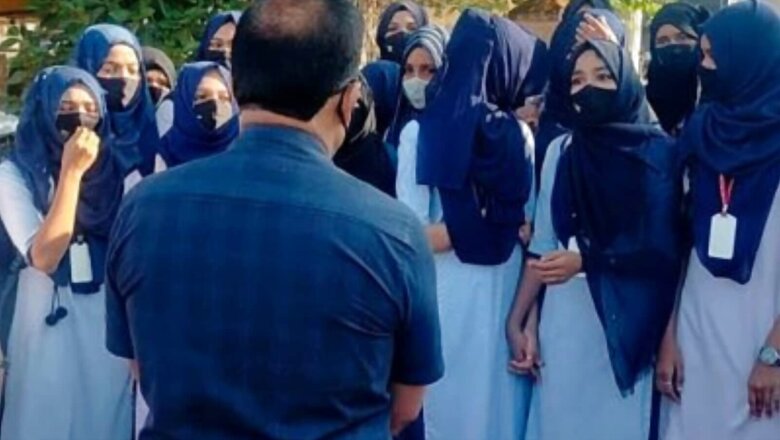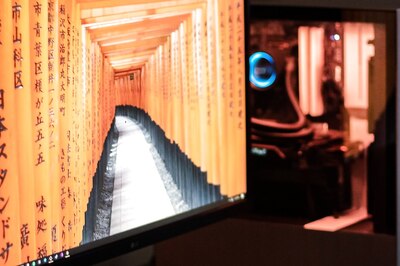
views
This week’s events in Indian state of Karnataka have come as a huge shock for those who have witnessed counter-movements against imposition of hijab across the world. In a series of events that have now turned violent, a section of female students at Women’s PU College in Udupi, Karnataka first started protesting against their college administration for not allowing them into classrooms with hijab. The protests have since spread to the entire state with many colleges reporting incidents of saffron scarf-clad students protesting against those demanding hijab and incidents of stone-pelting by pro-hijab students against them. Female students of Women’s PU College in Udupi have approached the High Court to demand justice and the case has been now sent to a larger bench for hearing considering its deeper constitutional implication.
Many legal experts have already expressed their views requesting people to stay away from taking an ideological and political stand on this matter. For them, it is a matter of individual choice with a reasonable space for the state to impose a uniform dress code. However, such are the times that both pro-hijab and anti-hijab sections have their own political agendas to fulfil through these protests. While on one hand, it has come as a handy tool for the Opposition to bash the ruling government in the state and the Centre over growing intolerance with the Opposition parties staging a walk-out from Parliament on Tuesday. On the other hand, it has also given a pretext to the pro-government groups to question the validity of Islamic symbols in a secular state like India.
The internal political games aside, we can’t help but compare the current pro-hijab protests in India with the anti-hijab movement that unfolded in 2017-2019 in Iran. This was the time when Iran witnessed a rerun of the famous anti-hijab march that took place in Tehran on International Women’s Day in 1979. At that time, Iranian women had turned out in massive numbers to protest against Ayatollah Khomeini’s declaration of hijab as mandatory. In 2017, an Iranian woman Vida Movahed became the inspiration for Iranian women as they took off their hijabs, tied them to a stick and waved it to crowds during the “Girls of Enghelab” protests.
In Iran, hijab is compulsory for women with any violation attracting a prison sentence of 2-12 months and a fine between 50,000 and 500,000 rials (adjusted for inflation). During 2017-19 protests, multiple protesting women were arrested with many grievously injured in the police action. An Iranian activist Saba Kord Afshari was put behind bars for 24 years over promoting “corruption and prostitution” by taking off her hijab. Iranian protesters are not alone. Women in Saudi Arabia had also launched a “niqab under my foot” movement to protest against conservative Islamic dress code mandated for them in 2018.
These anti-hijab protests are dominated by women’s revolt against objectification of their bodies. In research conducted at the Swinburne University of Technology in Australia, participants who wore hijab explained that Islamic ideas of modesty and self-respect regarding their sexuality prod them to consider “woman as precious like diamonds”. This understanding of a female body as being precious and its comparison with non-living things such as diamonds lead to blatant objectification of women. Ironically, Malala in a tweet targeting the Indian state called the decision to not allow hijab-clad girls in school as “objectification”. But in reality, Iranian and Saudi Arabian experience demonstrates that women themselves want to break free from hijab because it restricts their role in the modern society to that of a mere object.
Coming back to India and the recent protests to demand right to wear hijab, one can still hope that it is a just a section of Muslim women who consider it as a part of their religious belief who are demanding it. Evidence has been placed in court proving that students at the same Udupi college didn’t wear the hijab as late as December 2021. If it is a new toolkit to target the government of the day, it will eventually fade out. But if it becomes a massive movement with organic support from majority of Muslim women, then it is going to be an albatross around their own necks.
Don’t forget, during Iranian revolution women sported hijab willingly to protest against Shah Pahlavi rule but the sentiment was captured by the new Islamic regime with Ayatollah Khomeini making it mandatory. When it starts with hijab, it doesn’t end too well for women empowerment.
The author is a PhD in International Relations from the Department of International Relations, South Asian University. Views expressed in this article are those of the author and do not represent the stand of this publication.
Read all the Latest Opinions here

















Comments
0 comment